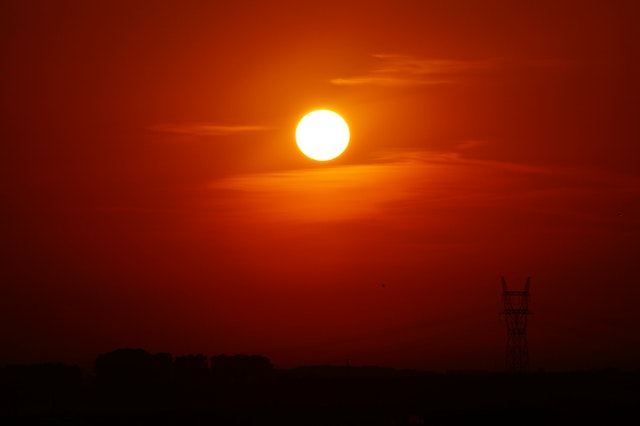Introduction:
When wildfires spread across the land, they give rise to a breathtaking sight – smokey skies and sunsets with a mesmerizing orange hue. The air becomes filled with particulate matter released by the fires, leading to a stunning transformation of the sky’s colors. Let’s embark on a scientific journey to understand the captivating phenomenon behind the orange-hued air during wildfires, and gain insights into the environmental impact and the importance of conservation efforts.
The Dance of Particulate Matter and Sunlight
Wildfires release a complex mixture of particles, collectively known as particulate matter, into the atmosphere. These particles consist of carbon, ash, and various pollutants, created through the combustion of organic matter. As the sun’s rays pierce through the smoky atmosphere, they interact with these tiny particles, initiating a beautiful dance of light and color.
The Fascinating Process of Scattering
The remarkable transformation of the sky during wildfires is due to a process called Rayleigh scattering. When sunlight encounters particulate matter smaller than the wavelengths of visible light, it scatters in various directions. The intensity of scattering is influenced by the size of the particles and the wavelength of light.
The shorter wavelengths of light, such as blue and green, are scattered more efficiently by the tiny particles. As a result, during clear skies, the sky appears blue, as these shorter wavelengths dominate. However, during wildfires, the presence of larger particles and additional pollutants affects the scattering process, leading to a shift in colors.

Awe-Inspiring Orange-Hued Air
As wildfires fill the atmosphere with smoke and particulate matter, the scattering of shorter wavelengths becomes less pronounced due to the larger particles and pollutants. This allows longer wavelengths, like red, orange, and yellow, to become more prominent. The result is an awe-inspiring transformation of the sky into a canvas of orange hues, casting a spellbinding glow over the horizon.
The effect is especially captivating during sunsets, as the sun’s rays must pass through a thicker layer of the smoky atmosphere near the horizon. This increased scattering of shorter wavelengths intensifies the appearance of red and orange hues, creating a magnificent sight that leaves onlookers in wonder.
Environmental Impact and Conservation
While we marvel at the beauty of smokey skies and sunsets during wildfires, it is essential to acknowledge the environmental impact of these events. Wildfires can have devastating consequences, including the destruction of ecosystems, air pollution, and the release of greenhouse gases. Climate change has contributed to the increased frequency and severity of wildfires, underscoring the urgency of wildfire prevention and conservation efforts.
Preserving natural habitats, implementing sustainable land management practices, and supporting firefighting endeavors are vital steps towards mitigating the environmental impact of wildfires. By working together to protect our environment, we can preserve the beauty of smokey skies and sunsets for future generations to enjoy.
Conclusion
The science behind the orange-hued air during wildfires is a captivating testament to the intricate interactions between light and particulate matter. As smoke-filled skies create stunning sunsets, we are reminded of the beauty and complexity of the natural world.
While we cherish the breathtaking views, it is crucial to remember the environmental impact of wildfires and the importance of conservation efforts. By safeguarding our planet’s resources and supporting initiatives to prevent and manage wildfires, we can ensure that the beauty of smokey skies and sunsets continues to enchant us for generations to come.












